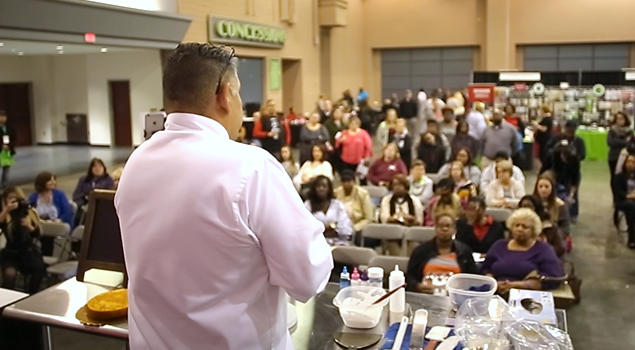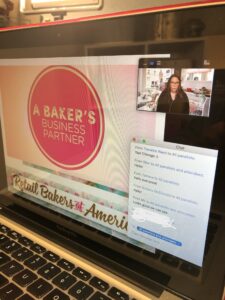For an in-person tasting of Austrian wines in Moscow, organizers hosted socially distanced tastemakers who could connect with the winemakers in Austria via video calls. A Helsinki-based hackathon held its local event, but also expanded to 11 in-person hubs around the world, with each site linked by video. TEDxSydney 2020 combined an in-person studio audience of 22 socially distanced people with a virtual “hall of faces” to beam its programming worldwide via eight cameras.
These are just some of the pivots meeting planners have made in response to the pandemic. This global health crisis didn’t just shut down the office—it also impacted live events. Conventions, trade shows, board meetings and educational seminars all had to cancel outright, postpone or switch to a virtual format. With live events resuming in many places, the buzzword now is “hybrid”—events that combine in-person sessions with virtual participation.
Now nearly half of corporate event participants see hybrid as “the ideal format,” Metrigy Research found. This year, nearly two in three businesses are boosting their hybrid events, and nearly six in 10 report they will be programming a mix of in-person and hybrid events. According to Meeting Professionals International, nearly eight in 10 planners anticipate “favorable” live attendance through summer 2022, while just over one-third are favorable about virtual attendance and nearly half are negative.
The pandemic has proven that, when done well, virtual events can be extremely impactful and effective at reaching larger audiences.
—Kate Romano, director of marketing, Opus Agency
“As long as it’s safe, in-person will always be the preferred means of gathering,” says Kate Romano, director of marketing at the Opus Agency, a global event firm that has worked with Salesforce, Alaska Airlines and Dell Technologies. “However, the pandemic has proven that, when done well, virtual events can be extremely impactful and effective at reaching larger audiences.”
Looking ahead to 2022, planners are re-imagining in-person events to reflect changes in habits and preferences, whether it’s providing space for remote work and team meetings on-site or shortening keynotes and allowing for more breaks. This adaptation mirrors changes in the workplace: Accenture found that more than 63% of “high-growth” companies have shifted to a “productivity anywhere” model, and 83% of workers favor a hybrid work situation.
Key takeaways from this new virtual reality
1. In-person events still matter
Virtual has staying power, but not necessarily as a replacement for in-person meetings, according to Phelps R. Hope, senior VP, meetings and expositions, at Kellen, a global association management and communications company.

The virtual format is a new “product” that works especially well for board meetings, professional development or educational seminars, community meetings and conferences of fewer than two days. “Virtual offers new ways to be nimble,” Hope says. “You can quickly set up a virtual conference that can be supplemental to an annual meeting or event.”
For The Sugar Show, about 130 people participated in the virtual version of its training academy, compared with 300 when it was held in conjunction with the in-person trade show. Content pivoted from mostly hands-on decorating classes to sessions focused on business.
Mitchell plans to continue to offer a separate virtual conference focused on training and education. But there was no way to replicate the dynamics of the trade show, which normally attracted 2,500 to 3,000 people over the course of a weekend and is scheduled to resume in late September 2021 at the Cobb Galleria.
2. Real-world events need to engage
As major conventions resume and companies plan real-world events, they must provide a compelling reason for participants to invest in transportation, hotel and other costs, as well as take the risk of travel. “We will see the benefits to attending be reconfigured—audiences are looking for in-person to provide them with experiences that they can’t find online,” Romano says.
Think of your event as a festival and the bells and whistles that might require. That could mean anything from crowd-sourced sessions to “Ask Me Anything” events to custom podcasts.
“It’s about matching attendees’ big expectations by transforming legacy events,” Romano says. “We want to bring together what people have been missing most—sharing in-person meetings, celebrating immersive arts and cultural moments, and enveloping them in multi-sensory experiences that they cannot experience virtually.”
3. Learn what’s possible
For event producers and organizers who went virtual, there were lessons to learn about technology, programming and audiences. The Ultimate Sugar Show in Atlanta, a baking and sweets expo, was one of the thousands of events to go virtual.

The floor show couldn’t be replicated online, but the event could offer its educational business seminars. In a nod to the real-world version’s swag bag, virtual participants were sent a goodie box that included baking and decorating supplies, a T-shirt and a cookie recipe card.
“Prior to the pandemic, hosting a virtual conference seemed out of the question,” says Cydni N. Mitchell, founder of the event. “But we made it work and plan to keep that as a new type of event going forward and separate from the in-person trade show.”
4. Lean in to the tech you know
Producing a virtual or hybrid event isn’t as cheap or easy as just sending out a mass Zoom invite. To keep the eyeballs, it’s almost like producing a TV show, with the attendant production values and costs, according to Hope. Multiple cameras, lighting, video technology and timing of events all come into play differently than if the event were being produced for an in-person audience.
“It’s much tighter produced—you don’t just set up the room and let people on stage run the show,” Hope says. “The attention span in the virtual world is like television. You’ve got to have something new happening every five seconds.”
According to Romano, as audiences became accustomed to virtual content, it’s imperative for brands to create “more sophisticated technology integrations and experiences” that might allow for greater data capture and analysis, as well as add-ons like translation services and collaboration rooms.
This can be accomplished by leaning into the tech you and your attendees already have—whether it’s Slack, Teams, WebEx or Zoom.
“This narrows down on the new technologies you’re asking people to learn, removes barriers to entry, and lets your internal speakers and teams perfect their virtual delivery on a few tools rather than many,” Romano says.
5. Virtual reduces barriers to attendance
Even as in-person events ramp up, virtual will continue to have its place for events like professional medical training that don’t necessarily require interaction with a presenter. Virtual also can be an effective tool to build an organization’s global footprint, especially if you set up breakout rooms and provide access to Q&A sessions for your far-flung participants.
“It’s going to be a long time before international attendees can come to events,” Hope says. “It’s a great time to lean in and develop your virtual footprint with international attendees.”
It’s going to be a long time before international attendees can come to events. It’s a great time to lean in and develop your virtual footprint with international attendees.
—Phelps R. Hope, senior VP, meetings and expositions, Kellen
Even for professionals trying to meet within the same state, virtual can help reduce barriers to participation.
Tiffany Allen, founder of AEA Consulting Firm, a corporate event management company in Baltimore, recently organized a three-meeting series of high-level education stakeholders in Virginia. The new virtual series drew a higher number of participants—about 85% of invitees.
“When you think about in-person events, travel time and cost must be considered—neither is an issue with a virtual event,” Allen says. “However, the downside with virtual meetings is you can lose the synergy that is created with in-person events.”
The future looks hybrid
As the world re-opens in fits and starts, health concerns remain paramount for resuming in-person events.
For Kellen, this means providing on-site COVID testing, as well as opportunities for vaccinations at some events. “We’re mirroring the state or county requirement we can be more stringent than local requirements, but we can’t be less stringent,” he says. “For attendees, we’re asking that you come vaccinated but still wear a mask.”

According to Romano, conventions and conferences that only had an in-person presence will likely add a hybrid component. “The world stage is bigger than ever before,” Romano says. “This allows you to return to the hyper-personalized, in-person connections that we all are craving while also maintaining an active virtual presence.”
However, hybrid events may not take place simultaneously. According to Hope, live-delayed hybrid meetings are easier to facilitate and might provide virtual attendees access to sessions soon after the live version has ended. In some cases, a speaker or session moderator might also join the virtual session to field questions.
Ultimately, Allen says, hybrid events are here to stay. “The overall success of 100% virtual events showed planners and organizations that there is a subset of the population that would prefer to keep attending virtually, even after COVID. As event planners, we must stretch our creative muscles to keep the virtual audience engaged in hybrid events.”
Lead photo courtesy of the Opus Agency